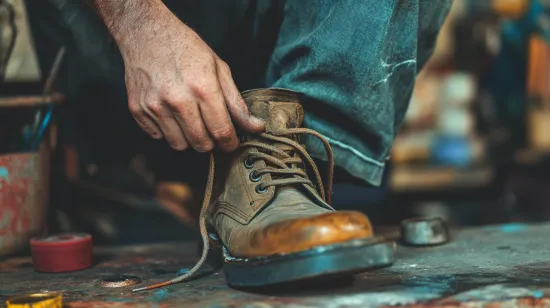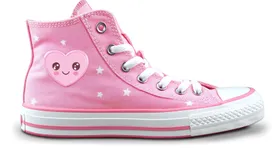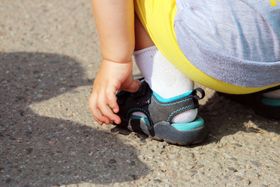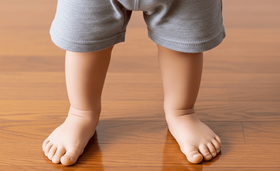How to Fix a Hole in Your Toddler’s Shoe
A comprehensive guide to the art of shoe patch repair
Updated December 6, 2024

Given the boundless energy toddlers possess, it's understandable that their shoes often show signs of their lively escapades. As these tiny explorers set out to discover the world, their favourite footwear can bear the evidence of their adventures, sometimes even sporting holes.
Before parting with those cherished pairs of shoes, it may be beneficial to explore footwear restoration.
» Discover which shoe fabrics are best for children's feet
Fixing a Hole in Your Toddler's Shoe
Follow these steps to repair your child's worn out shoes:
1. Assess the Damage
Before starting the restoration process, check how big the hole or rip is in your toddler's treasured shoes. This initial evaluation determines if you can fix the damage and whether the shoe is worth fixing.
You don't need to repair every hole immediately; some may even add character to the shoes. But it's good to check so you can fix any gaps that could cause problems or discomfort.
2. Gather Necessary Supplies
To complete your repair task, you should have the following materials on hand:
- Shoe glue
- Fabric patches
- Needle
- Thread
- Scissors
3. Steps to Fix a Hole in Your Toddler's Shoe
For the best outcome, use a systematic approach when learning how to fix a hole in your toddler's shoe. Here's how to patch those punctures:
- Clean and prepare the shoe: Ensure the shoe is spotless and dry. A clean surface helps patches or glue stick better.
- Use shoe glue for small holes: Apply a tiny amount of shoe glue around the hole's edges. Press these borders together until the glue sets. Shoe glue is flexible and strong, ideal for small tears.
- Patch larger holes: For a shoe patch repair—which includes repairing more severe damage—cut a fabric patch slightly larger than the hole. After putting some shoe adhesive on its edges, place it over the hole. Press gently to make sure it sticks well.
- Reinforce with stitching: When learning how to fix ripped shoes, you also need to learn how to sew. Use a needle and thread to reinforce the patch's edges. This stitching lasts longer and makes the shoe more sustainable.
- Allow proper drying time: Give the shoe enough time to dry as per the glue's instructions. Rushing this process could make the repair less reliable.
» Learn how to care for leather shoes like a pro
Knowing When It's Time to Replace
Even the finest repairs have their limits. While knowing how to fix shoes can save your kids' favourite shoes, preventing future damage is also important.
Buying durable, high-quality footwear can significantly increase shoes' lifespan. You can also add extra patches or stitches to high-stress areas and use protective sprays to guard them against moisture.
However, sometimes you just have to let that pair of worn out shoes go. If footwear is significantly damaged or no longer comfortable and supportive, it's time to replace it with a new pair.
» Pick the best durable kids sneakers for active playtimes
Promoting Durability and Sustainability
The art of shoe repair isn't just about giving shoes a second life; it underscores the significance of being resourceful and sustainable. It also demonstrates the value of utilising what you already have and minimising waste.
As you foster your kids' foot development, you're also instilling a mindful approach to consumption, one mended shoe at a time.
If you're looking for a durable shoe, try First Walkers' shoes for pre-walkers. These shoes prioritise comfort and support crucial foot health. They're also crafted from breathable materials and have ergonomic designs that promote correct gait, stability, and healthy foot development.





